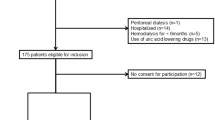Abstract
Xanthine oxidase (XO) is an important enzyme, expressed at high levels in the vasculature in endothelial cells, that catalyzes the hydroxylation of hypoxanthine to xanthine and xanthine to uric acid. Excessive production of uric acid results in hyperuricemia linked to gout and cardiovascular diseases. Testing inhibition of XO is important for detection of potentially effective drugs or natural products that could be used to treat diseases caused by increased XO activity. In the present study, for the first time, we developed an in vitro chemiluminescent bioassay to determine XO activity in living endothelial cells and the IC50 value of oxypurinol, the active metabolite of the inhibitor drug allopurinol. Intracellular XO activity was measured in less than 20 min with a luminol/catalyst-based chemiluminescence assay able to measure XO with a limit of 0.4 μU/mL. Oxypurinol addition to 5 × 103 cells (ranging from 5.0 to 0.0 μM) caused a linear decrease in XO activity, with an IC50 of 1.0 ± 0.5 μM. The detection system developed was low-cost, rapid, reproducible, and easily miniaturizable so suitable to be used on small quantities of cells.



Similar content being viewed by others
References
Borghi C. The role of uric acid in the development of cardiovascular disease. Curr Med Res Opin. 2015;31(2):1–2.
Kelkar A. Allopurinol as a cardiovascular drug. Cardiol Rev. 2011;19(6):265–71.
Landmesser U, Angiotensin II. Induces endothelial xanthine oxidase activation role for endothelial dysfunction in patients with coronary disease. Arterioscler Thromb Vasc Biol. 2007;27(4):943–8.
Higgins P. The potential for xanthine oxidase inhibition in the prevention and treatment of cardiovascular and cerebrovascular disease. Cardiovascular Psychiatry and Neurology. 2009;282059
Atlante A. A sensitive method to assay the xanthine oxidase activity in primary cultures of cerebellar granule cells. Brain Res Protocol. 2000;6:1–5.
Roda A. Antioxidant properties of bile salt micelles evaluated with different chemiluminescent assays: a possible physiological role. J Biolumin Chemilumin. 1998;13:327–37.
Jansen EH. Characteristics and detection principles of a new enzyme label producing a long‐term chemiluminescent signal. J Biolumin Chemilumin. 1989;4(1):129–35.
Bailey IA. Chemiluminescence measurements of xanthine oxidase and xanthine dehydrogenase activity in four types of cardiovascular cell. Basic Res Cardiol. 1988;83(4):392–400.
Roda A. Bile acid structure-activity relationship: evaluation of bile acid lipophilicity using 1-octanol/water partition coefficient and reverse phase HPLC. J Lipid Res. 1990;31:1433–43.
Caliceti C. 17β-estradiol enhances signalling mediated by VEGF-A-delta-like ligand 4-notch1 axis in human endothelial cells. PLoS One. 2013;8(8):e71440.
Konradi J. Redox-sensitive mechanisms underlying vascular dysfunction in heart failure. Free Radic Res. 2015;49(6):721–42.
Pritsos CA. Cellular distribution, metabolism and regulation of the xanthine oxidoreductase enzyme system. Chem Biol Interact. 2000;129:195–208.
Breton-Romero R. Hydrogen peroxide signaling in vascular endothelial cells. Redox Biol. 2014;2:529–34.
Laptev R. Intracellular chemiluminescence activates targeted photodynamic destruction of leukaemic cells. Br J Cancer. 2006;95:189–96.
Reda M. Evaluation of chemiluminescence and flow cytometry as tools in assessing production of hydrogen peroxide and superoxide anion in human spermatozoa. Fertil Steril. 2009;92(2):819–27.
Lundqvist H. Influence of different luminols on the characteristics of the chemiluminescence reaction in human neutrophils. J Biolumin Chemilumin. 1995;10(6):353–9.
Speroni E. Oleuropein evaluated in vitro and in vivo as an antioxidant. Phytotherapy Research, 1998; 12.S1: S98-S100
Cui H. Effect of pH on inhibition and enhancement of luminol‐H2O2‐Co2+ chemiluminescence by phenolic compounds and amino acids. Photochem Photobiol. 2004;79(3):233–41.
Parvez K. Luminol-based chemiluminescent signals: clinical and non-clinical application and future uses. Appl Biochem Biotechnol. 2014;173:333–55.
Acknowledgments
We are grateful to Prof. M. Guardigli and M. Mirasoli for the critical review of this manuscript.
Author information
Authors and Affiliations
Corresponding author
Ethics declarations
Fundings source
This work was supported by the Istituto Nazionale Biostrutture e Biosistemi (INBB), Roma, Italy. The funders had no role in study design, data collection and analysis, decision to publish, or preparation of the manuscript.
Conflict of interest
The authors declare that they have no conflict of interest.
Additional information
Published in the topical collection Highlights of Analytical Chemical Luminescence with guest editors Aldo Roda, Hua Cui, and Chao Lu.
C. Caliceti and D. Calabria contributed equally to this work.
Electronic supplementary material
Below is the link to the electronic supplementary material.
ESM 1
(PDF 130 kb)
Rights and permissions
About this article
Cite this article
Caliceti, C., Calabria, D. & Roda, A. A new sensitive and quantitative chemiluminescent assay to monitor intracellular xanthine oxidase activity for rapid screening of inhibitors in living endothelial cells. Anal Bioanal Chem 408, 8755–8760 (2016). https://doi.org/10.1007/s00216-016-9763-x
Received:
Revised:
Accepted:
Published:
Issue Date:
DOI: https://doi.org/10.1007/s00216-016-9763-x




